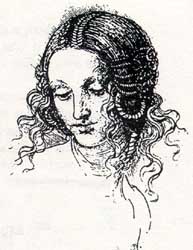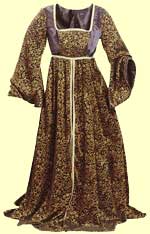Status of Women

Not much has necessarily changed since Middle Age Europe. A female was considered a “girl” until married. . If a woman remained unwedded she wouldn’t be fully grown. Women who couldn't marry, or didn't have a dowry, would have to become nuns or find a profession. Prostitution was also common. There were some famous courtesans who became "favorites" of rulers and popes. Usually more beautiful and charming than the well-born wives who despised them, they were often as well-educated, and as well-dressed. But it was very possible that their status as favorite could change overnight.
Girls stayed home with mothers, to learn the skills needed to run a household. Daughters of nobles received if any, a limited education, focused on history, Latin and geography, along with skills needed to be a good wife. Few women received an education equal to males.
Clothing

During the height of the Renaissance, fitted bodices, billowing sleeves, and dramatic colors characterized clothing for women. Renaissance clothing, however, varied considerably with social class, since the lower classes did not wear the same fashions as the rich. Women progressed from the coned hats of middle ages to embroidered veils. Renaissance wedding dresses were made of rich brocades and rich jewel–toned velvets. Just like now, people wore their finest clothing to a wedding. The bride usually wore her hair down and sometimes added a circlet of flowers. White was not a wedding color until much later. It was during these times that the beret was invented. Other accessories were girdles, caps. Both men and women wore daggers concealed within clothing. The dagger in the picture, called the Veneitan Stiletto, could have been easily been hidden in both men’s and women’s clothing. See? Juliet had it easy!

